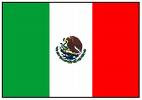
Today's PC printers traces its roots back to the very first of all individual printing machines, the typewriter. This first mechanical printer served as a means to add legibility to writing, to eliminate the vagaries of cursive script and remove its ambiguities and misunderstandings, to make the transcribed word as formal as the work of the printing press.
As initially conceived, the typewriter was hardly the breakneck-paced device we came to know in the generation before PCs. It was hardly able to keep up with the fleeting fingers of the scribe. The mechanism was slow and clumsy, prone to jamming, requiring force and memory to make work. As most, two fingers first did the work. It took more that 20 years to develop the modern concept of touch typing with all tem. The men who had to labor over the machines pecked the typewriter into the expected standard for business papers and correspondence.
Despite its initial disadvantages, the typewriter paved the way for the computer printer. It set a high standard, indeed, for the quality of its output. Type characters could be trusted, whereas hand lettering could not, although banishing errors entirely was an arduous chore, as anyone suffering through an academic dissertation in the days before the PC can attest.
The same technology underlying the humble typewriter has survived through to today and served as the foundation of the first computer printers. In fact, some primitive PC printers back in the days when hackers were hobbyists rather than criminals were electrified typewriters modified to hammer on command.
Although an old fashioned typewriter is a mechanical complexity, its operating principle is quite simple. Strip away all the cams, lever and keys and you see that the essence of the typewriter is its hammers.
Each hammer strikes against an inked ribbon, which is then pressed against a sheet of paper. Ink is absorbed into the paper then, the ink leaves a visible mark. A letter of the alphabet is born.
Epson claims to have invented the personal computer printer, having introduced its first model, the MX 80, in 1978, three years before IBM introduced the PC. In fact, IBM's first printer offering, the graphics printer, was manufactured change in ROM to reflect IBM's choice in character set. The dot matrix printer flourished, but slowly gave away to the laser printer.
The first revolution in personal printing in 100 years came in 1984 with the introduction of the HP LaserJet. The basis of this new technology was the same as used by a Xerox photocopier, although the print engine in the LaserJet use a kind of heatset light inspired offset printing. The laser printer now claims the majority of printers that are sold.
The first revolution in personal printing in 100 years came in 1984 with the introduction of the HP LaserJet. The basis of this new technology was the same as used by a Xerox photocopier, although the print engine in the LaserJet use a kind of heatset light inspired offset printing. The laser printer now claims the majority of printers that are sold.




No comments:
Post a Comment